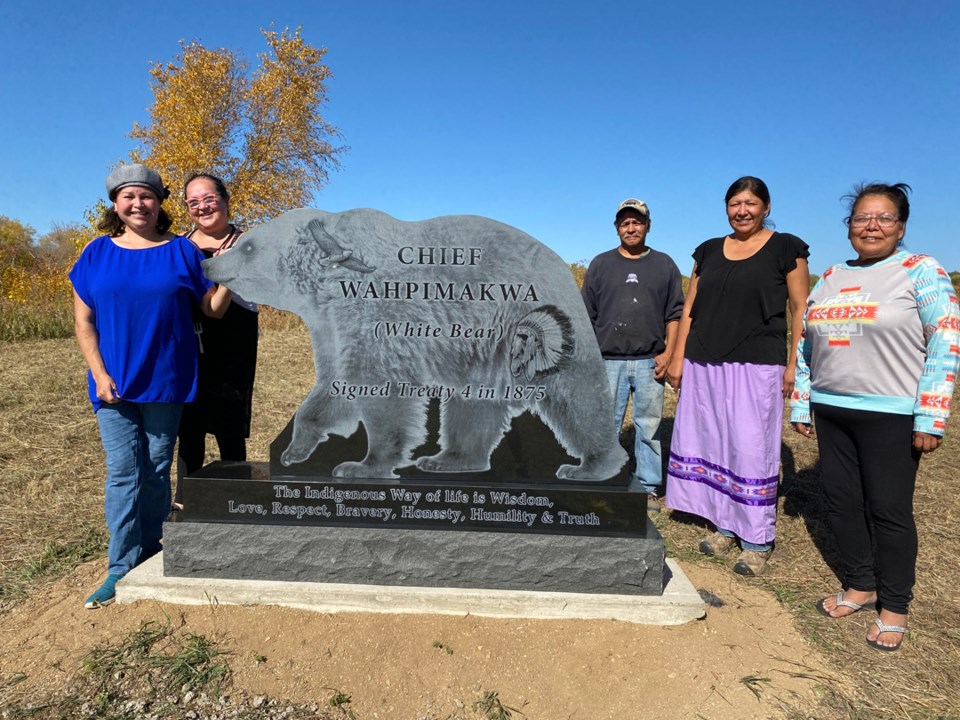A monument was unveiled last week at the White Bear First Nations Bigstone cemetery.
Chief Wahpimakwa was the first chief of White Bear and was buried at this cemetery in 1900. The original grave marker consisted of an old iron pipe and a replacement memorial was long overdue.
Chief Wahpimakwa was the first White Bear chief who governed from 1875 to 1900. He signed Treaty 4 on Sept. 9, 1875, and in 1877 accepted the reserve on the east side of the Moose Mountain.
Although he signed an adhesion to Treaty 4, the reserve is located within the Treaty 2 boundary. Upon signing the treaty, the reserve already included people from diverse cultural backgrounds; primarily Ojibwe/Anishinaabe Saulteaux, Nehiyawak Plains Cree, Nakota Assiniboine and Dakota Sioux.
With the forced combinations of White Bear First Nations with two adjacent bands, Pheasant Rump and Ocean Man, in 1901, the cultural diversity was broadened further. White Bear’s ancestors travelled for kilometres hunting, fishing, gathering, and surviving on vast tracks of land.
Chief Wahpimakwa died in 1900 at the age of 85. He had five wives, of which one was known to be Mrs. White Bear.
The beautiful stone carving is now proudly standing over the gravesite. Pictured is the majestic white bear on which is etched a soaring eagle and a chief’s headdress. It reads “Chief Wahpimakwa of White Bear, signed Treaty 4 in 1875. The Indigenous way of life is wisdom, love, respect, bravery, honesty, humility & truth.”
To honour this special unveiling, a luncheon took place with nearly 100 students from the White Bear Education Complex in attendance. Chief Annette Lonechild was honoured to be a part of the ceremony.
“I want to sincerely thank Bernadette Akachuk and her staff at White Bear First Nation lands and resources for spearheading this project. I am so proud to be chief of White Bear First Nations and being a part of its treasured history.”
The Bigstone Cemetery is one of the most easterly cemeteries located on the reservation, a few kilometres north of Carlyle and east of Highway 9. There are eight cemeteries situated on White Bear First Nation lands.




